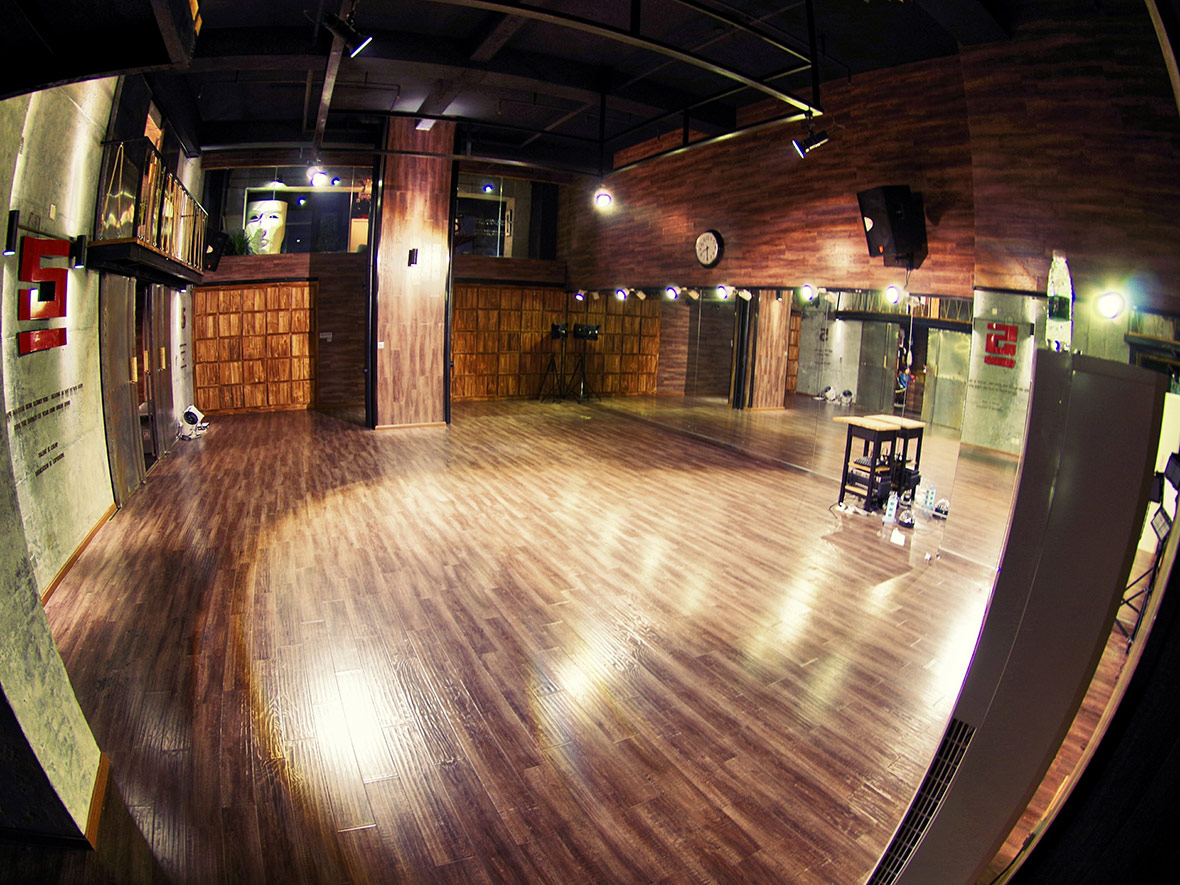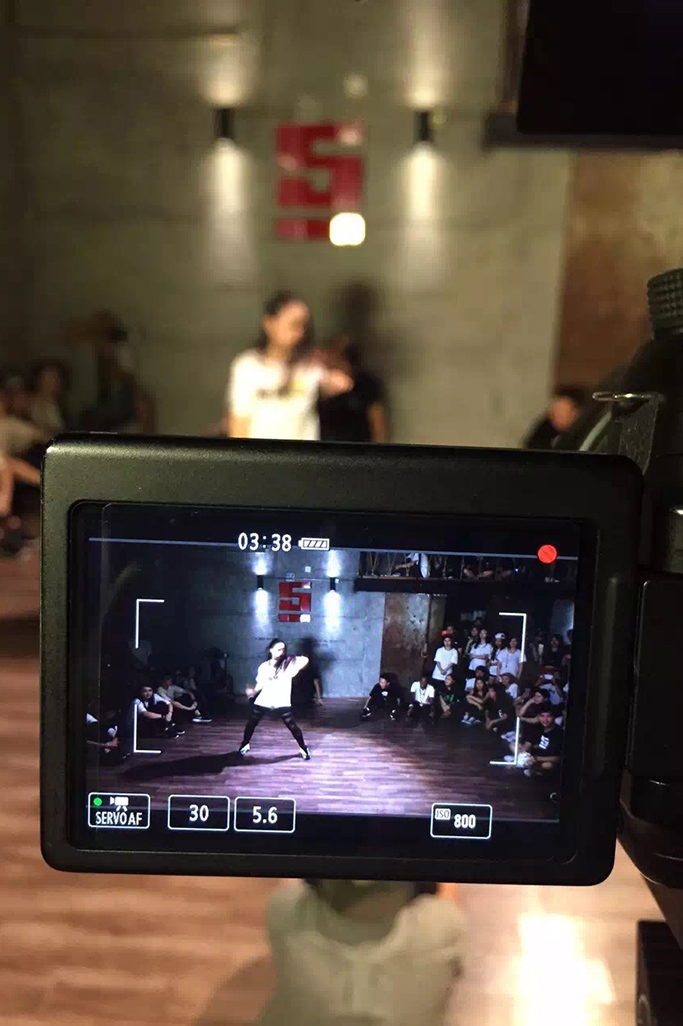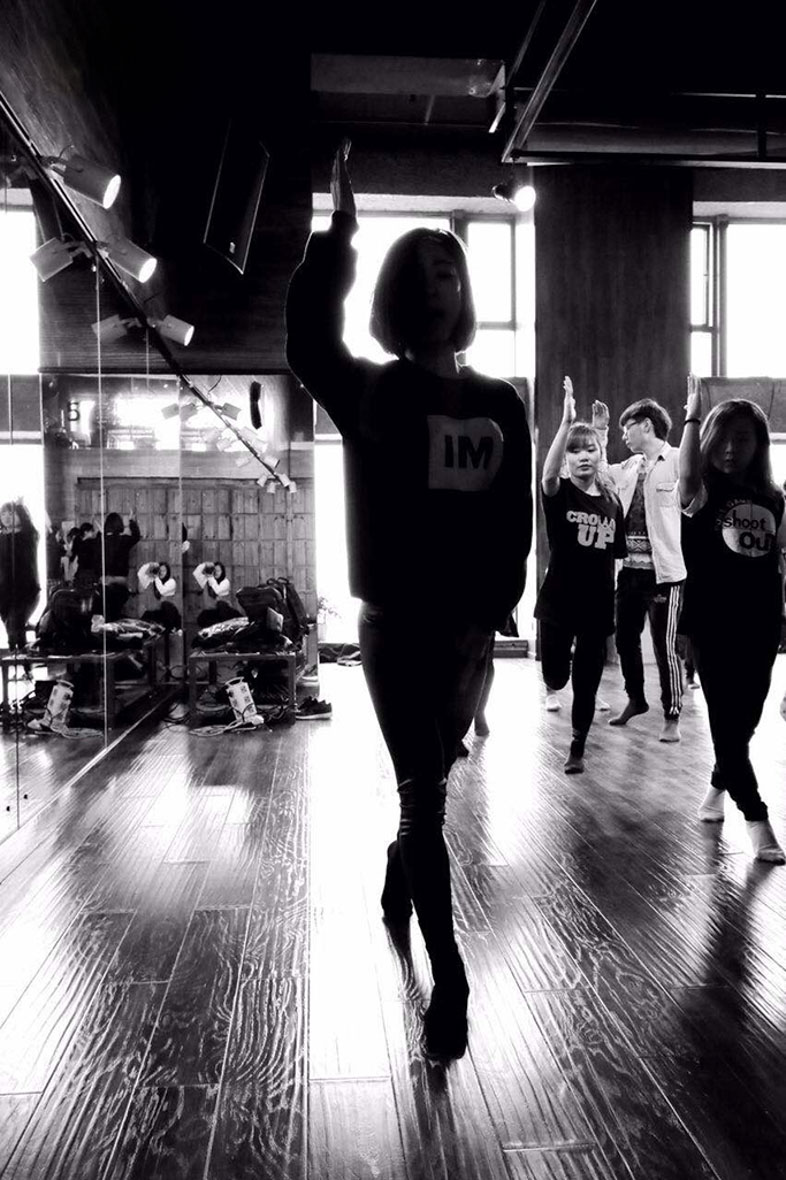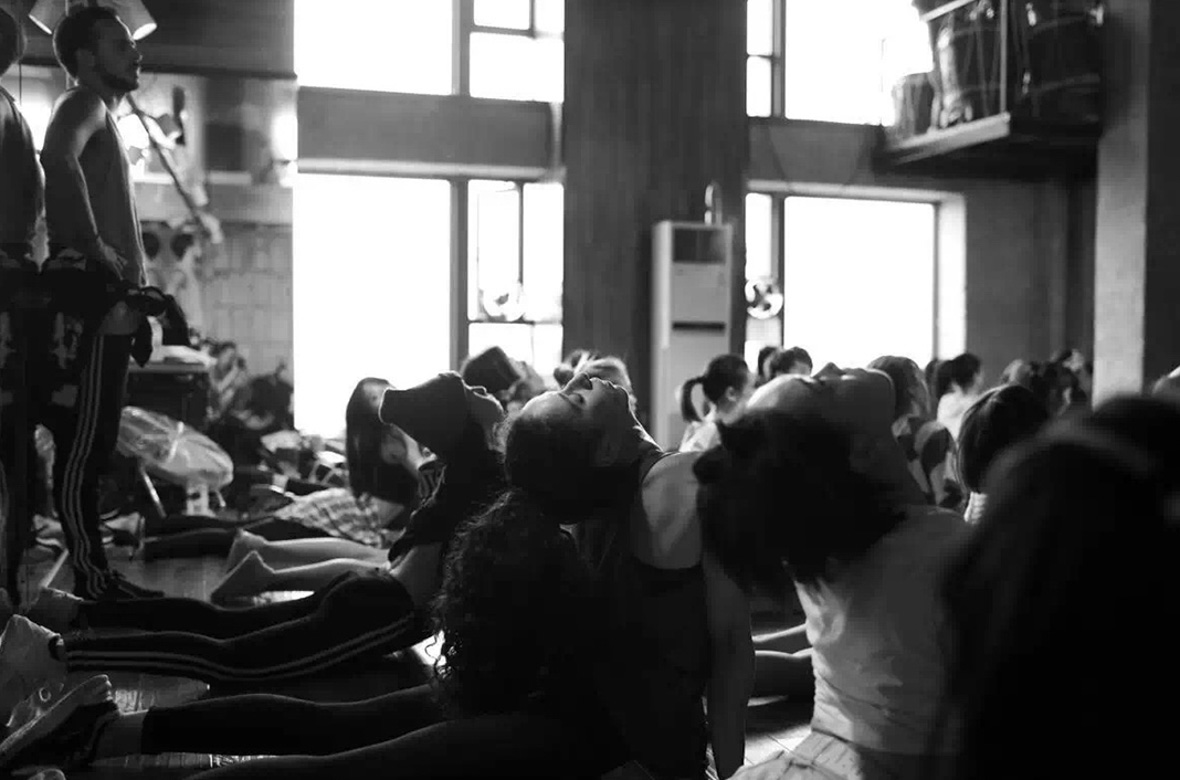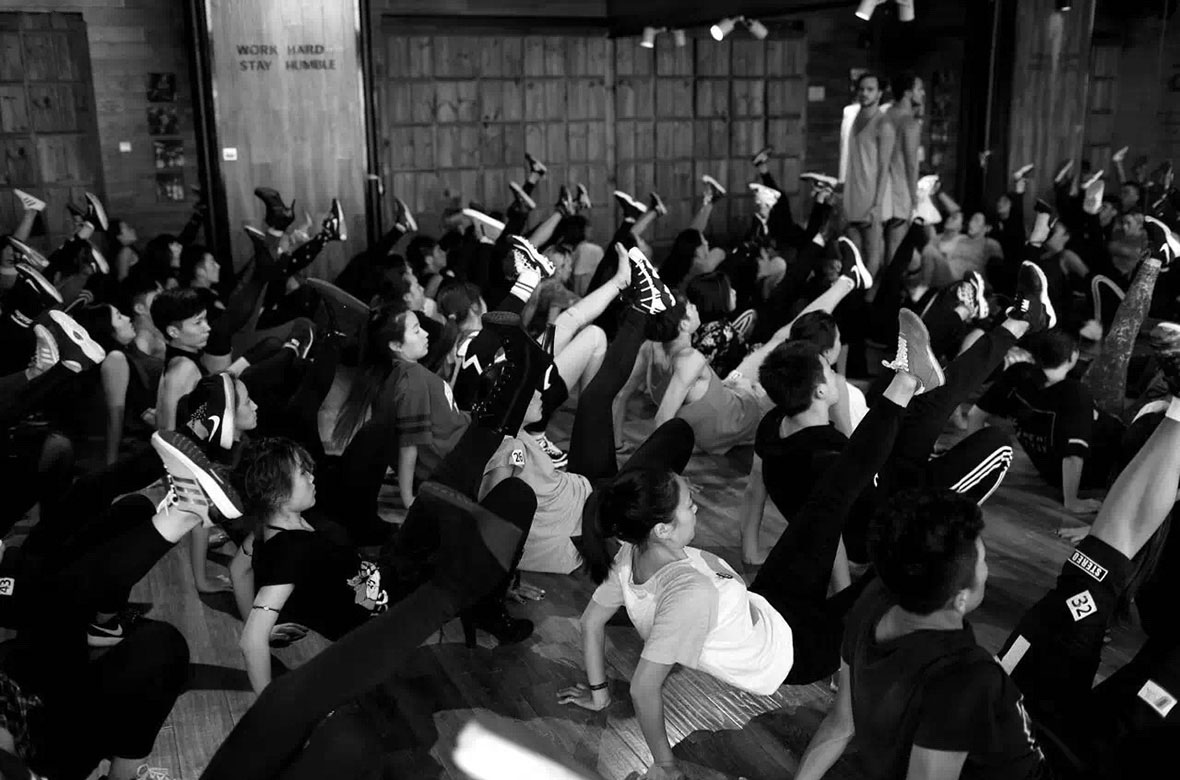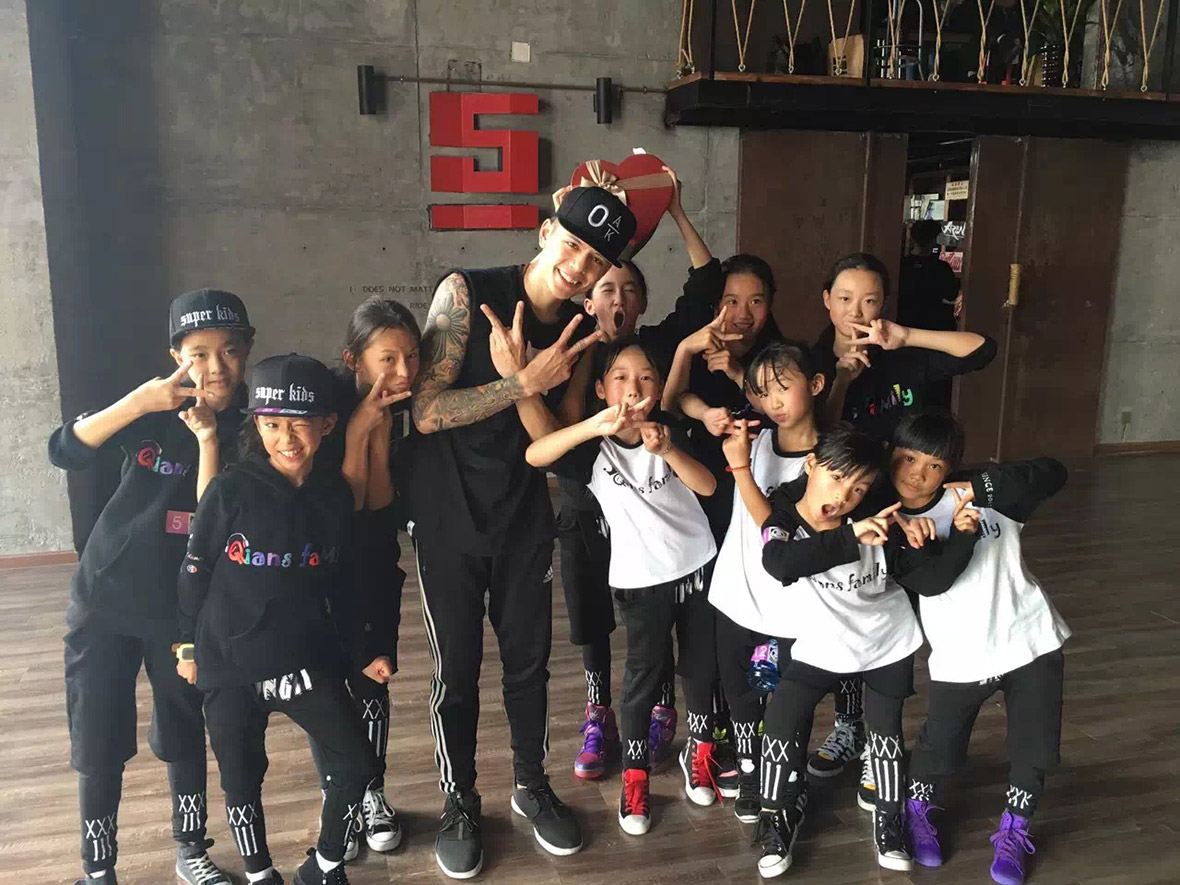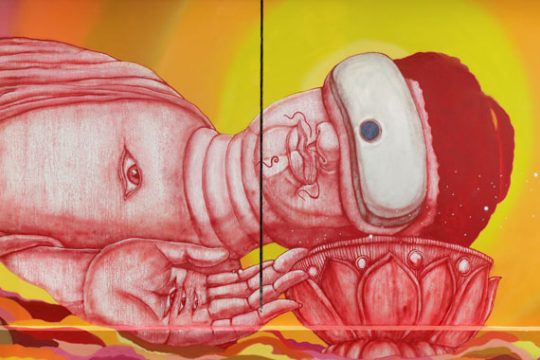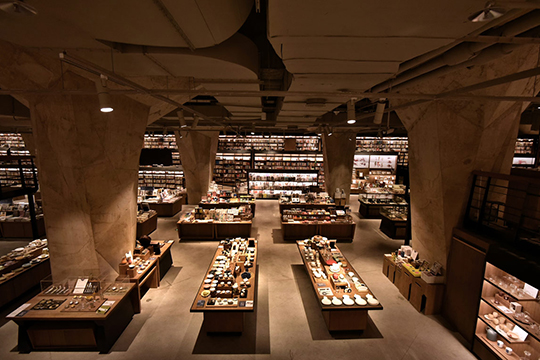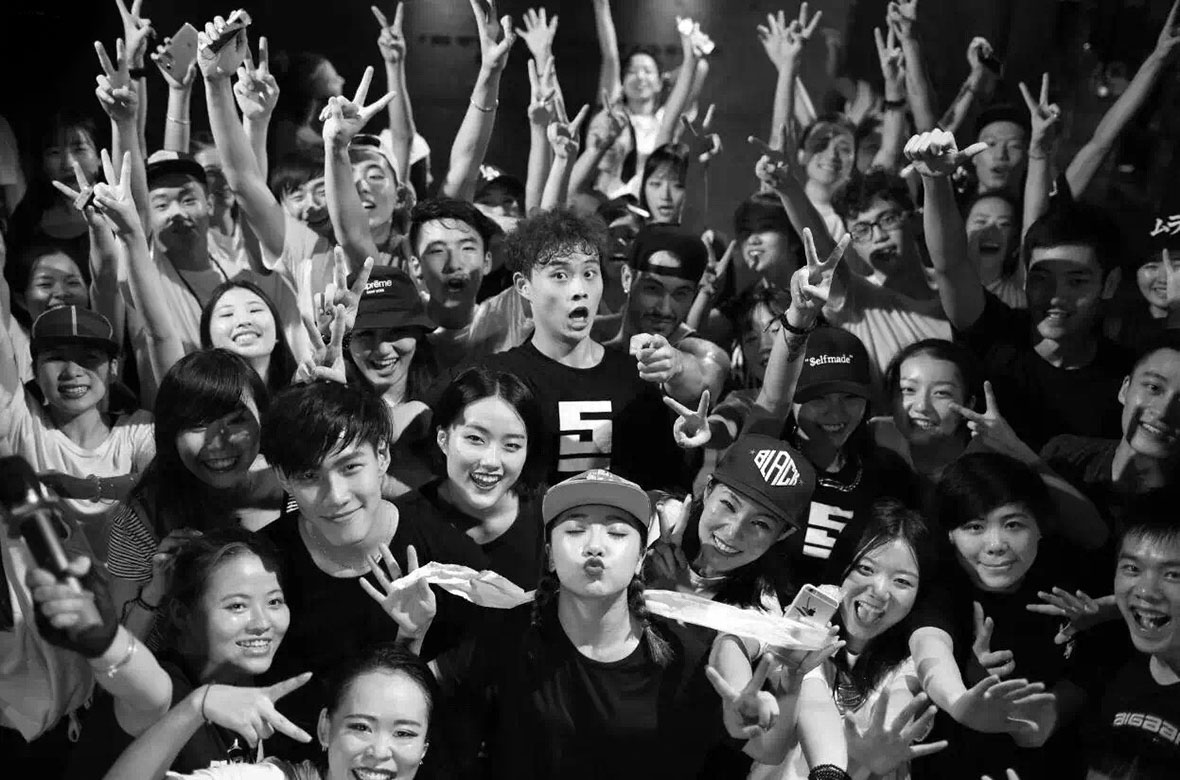
Sinostage is Chengdu’s premiere urban dance studio, offering classes in a wide variety of dance styles including hip hop, jazz funk, and contemporary. A leader within China’s urban dance scene, Sinostage regularly brings in top international dancers and choreographers from abroad to teach, share, and exchange with the local community. Eli Sweet, an American who co-founded the studio with his wife, shares his thoughts on the past and current state of urban dance in China.
Sinostage是成都首间urban dance工作室,这间由来自美国的Eli Sweet与他的妻子共同创立的工作室提供种类多样的舞蹈课程服务,包括hip hop、jazz funk和contemporary。作为中国urban dance领军先锋,Sinostage会经常邀请海外的顶级舞者及编舞师为大家授课,并与本地团体分享和交换心得。他希望借此与大家分享自己对中国urban dance的过去以及当下现状的想法。
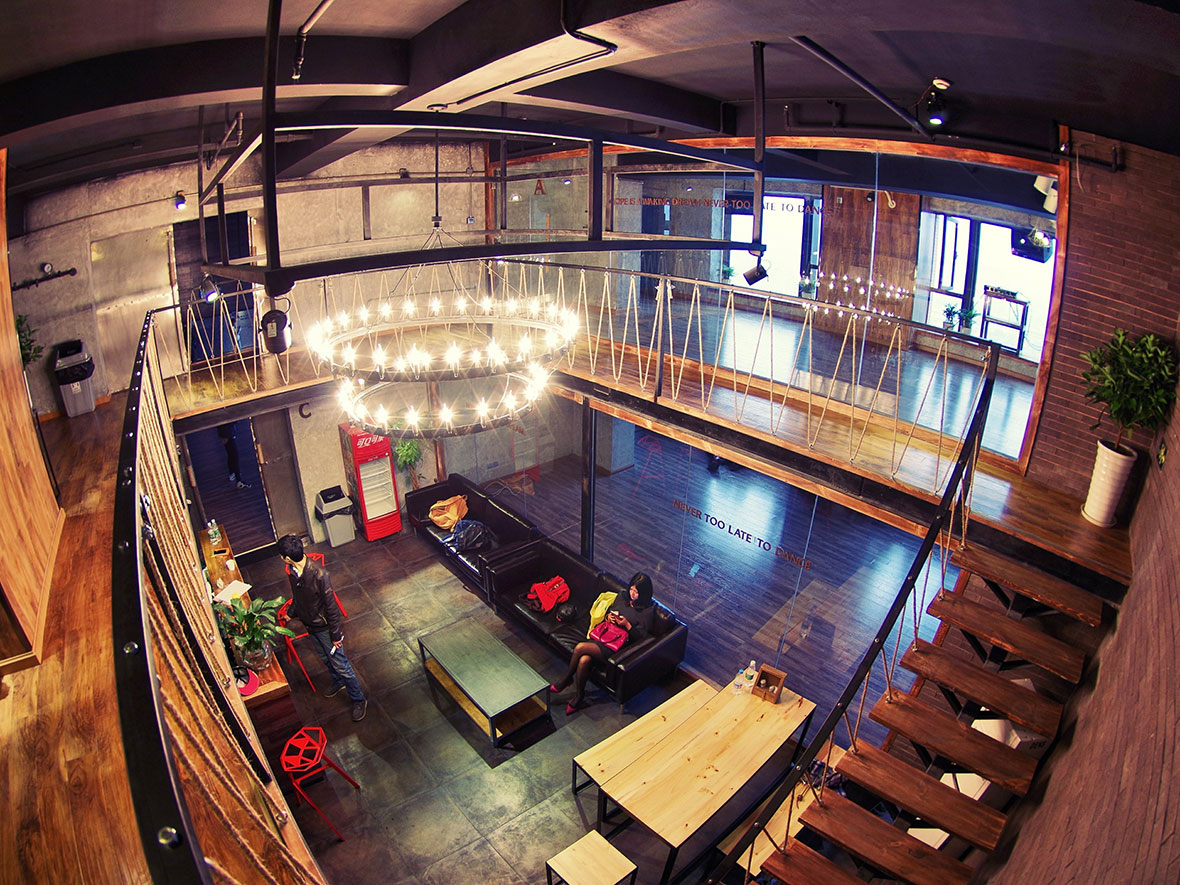
Neocha: Can you tell us about the different styles of urban dance in China?
Eli: It is hard to give the right name to different types of urban dance. Inside of the community there is not total agreement about correct names, and in the general public there is even more uncertainty about how to describe different styles. Hip hop is the wellspring from which most of the popular dance trends around China, Asia, and the world evolved… hip hop and Michael Jackson. A lot of Chinese use the term street dance, which could include breakdancing, popping, locking, and traditional hip hop. There is also the more peppy, commercial style of dance that is often called jazz funk, or street jazz – the kind of dance that you might have seen in the choreography of a music video in the mid-00s.
The dance movement that we identify ourselves with is urban dance, a style that emerged in the mid-00s in L.A., also sometimes called L.A. style. It is a blend of the hip hop and commercial styles of the era, together with the abstract expressive choreography of modern dance, the driving rhythms of electronic music, and the soulful groove of R&B. The distinguishing features of urban dance are that it tends to blend different styles of dance, the choreography is narrative or lyrical, and it utilizes videography. Urban dance choreographers position themselves and their choreography as the centerpiece of their videos – rather than using dance as a backdrop for the singer in a music video – and that was a departure from how choreography was commonly used in the pop culture context.
Neocha: 可否与我们分享一下中国urban dance的不同风格是怎样的?
Eli: 其实很难准确地去给现代urban dance的不同风格命名。关于如何去描述不同的风格,在团体内部依旧尚未达成完全共识,对外就更加不确定了。Hip hop是中国、亚洲乃至全球的大部分流行舞蹈潮流和进化的源泉……Hip hop以及Michael Jackson。很多中国人用术语街舞定义,它包括breakdancing、popping、locking以及传统hip hop,当然还有更具活力和商业风格的舞蹈,通常会将其称为jazz funk或street jazz,你可能会在2000年中期的MV中看到这类编舞。
我们在舞蹈律动中的自我认同即是urban dance,这是在2000年中期的洛杉矶出现的舞蹈风格,有时也会被称为洛杉矶风格。它是hip hop和当时时下的商业舞蹈形式融合的产物,且参入一些富含抽象表达的现代舞编舞,伴随着电子音乐的韵律及情绪丰富的R&B曲调。在我看来,urban dance与众不同的特点是它混合不同风格的舞蹈,编舞是带有叙事性或感性的,并且它也要利用影像记录。Urban dance编舞师将自己及其编排的舞蹈定位为他们影片的核心部分,而非将舞蹈作为MV中歌手的背景装饰,后者则背离了编舞已经普遍用于流行文化的趋势。
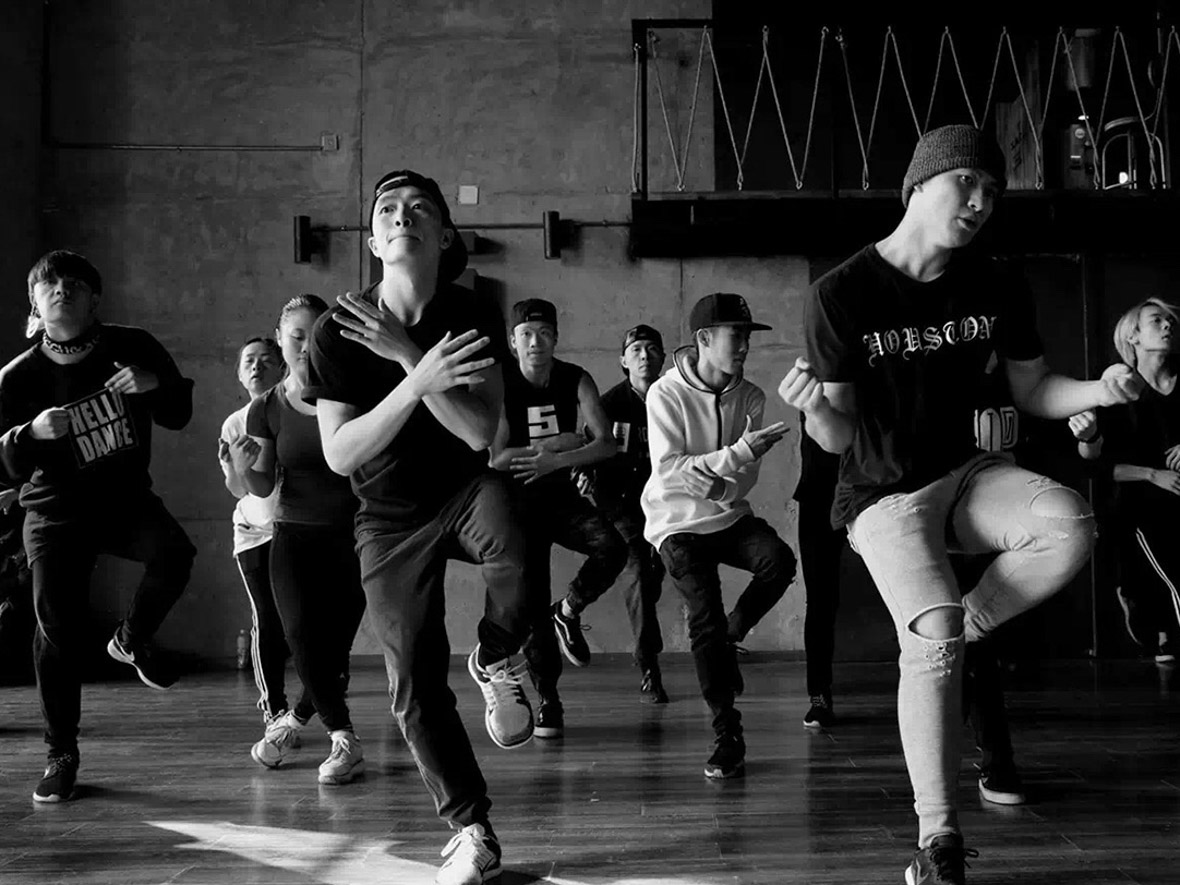
无法观看?前往优酷
Neocha: What is the current state of the urban dance scene in China?
Eli: These days, the ubiquity of smart phones, mobile data networks, and social media video sharing platforms has created interconnected communities of dancers. Across the country and the world, they share videos of new choreography with one another on a constant basis. Dance enthusiasts, even working class ones, can access a vastly wider variety of choreography than would have been available to them just a few years ago. This traffic of dance video content is evidenced by the presence of aggregators, who sift through the torrent of shared content and curate it for subscribers on social media such as Meipai or WeChat. This process of constant creative exchange has super-charged the development of the art form, facilitating a cross-pollination of styles and triggering a growth in interest among young Chinese.
Neocha: 中国urban dance界的现状如何?
Eli: 当下智能手机、移动数据网络以及社交媒体影片分享平台的普及,将来自全国乃至全世界的舞者连接起来,他们持续不断地将自己新编排的舞蹈视频相互分享。因此与以往相比,如今舞蹈爱好者们,即便是普通人士,都能获得大量种类丰富的编舞资源。舞蹈视频受欢迎的程度可以从一些视频精选平台来证明,它会从全世界的舞蹈视频中进行筛选,然后通过社交平台来分享给他们的粉丝,如通过美拍或微信。持续不断的创意分享过程为这类艺术的发展注入巨大能量,促进了各种风格之间相互学习进步,也激发了中国年轻人对它的兴趣。

Neocha: How is Sinostage different from other dance studios?
Eli: There are innumerable dance studios across China, and I would divide them into three groups – traditional, first-wave cool, and millennial. Traditional is all of the ballet, folk dance, performance wushu, and whatever studios. First-wave cool is the cheesy hip hop street dance studios that have been around for a long time. Bad graffiti, shallow, generic, urban aesthetic, some good breakdancing, lots of outdated and dislocated symbols of subversion, and no grounding in the cultural context of the place or time. Millennial is all of the studios that come after that – a little slicker and more self-aware, still very hip hop infused, but orienting their identity in the Chinese culture landscape in slightly different ways. We would definitely fall into the latter category, and we are in solidarity with the many other great studios around China that are carving their niche out in unique ways. We work with TI, SDT, and RMB in Beijing; GH5 in Shanghai; and Diamond Freak in Guangzhou among many others, to bring choreographers from overseas to teach, and bridge the gap between China and the global dance community. In the future we will send Chinese dancers overseas to dance as well.
Neocha: Sinostage和其它舞蹈工作室有何不同?
Eli: 中国有数不尽的舞蹈工作室,我会将他们分为三类:传统型、“第一代酷”以及新千年一代。传统型主要是芭蕾、民间舞蹈、武术表演以及其它的一些工作室。“第一代酷”是比较粗俗的hip hop街舞工作室,也是存在蛮久的了,糟糕的涂鸦、肤浅、空泛、城市审美、加一些还不错的breakdancing、太多是过时和混乱的叛逆符号,抑或是脱离于当下或当地文化背景。新千年一代是在那之后涌现的所有工作室,有些圆滑却更有自知之明,仍然充满hip hop的味道,却也十分明确他们自身中国文化背景又略显独特的身份。我们当然会执迷于后者,并且我们也在和中国的其它一些很棒的工作室联合,用独特的方式将他们的优势展现出来。我们合作的有北京的TI、SDT以及RMB,上海的GH5以及广州的Diamond Freak,以及其它的一些团体,我们也邀请海外的编舞师来教学,建立中国和全球舞蹈群体之间的桥梁。今后我们也会将中国舞者输送到海外去表演。
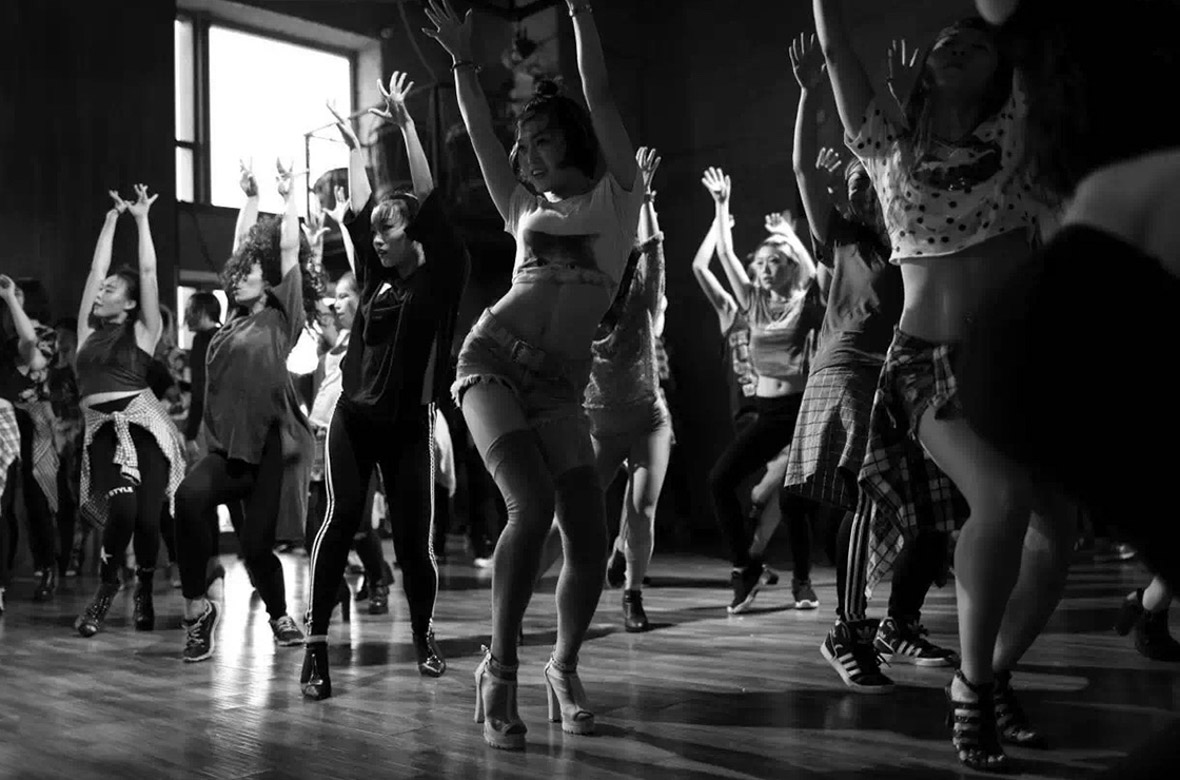
Neocha: What kinds of events does Sinostage organize?
Eli: The most important event that we organize is our annual Arena dance competition, the largest group choreography competition in China. At Arena 2015 there were nineteen teams from around China, each with over twenty members dancing. Our co-organizers for the event are the Kinjaz, a famous U.S. dance crew, runner-up in the 2015 America’s Best Dance Crew competition. Last year’s Arena competition was co-sponsored by Meipai and live streamed on their platform. We are hosting Arena 2016 on May 28th in Chengdu.
Dance is a public utility. It is not just for cool people or professional dancers. We believe that dance should be enjoyable and approachable. I am not a professional dancer, but I do like to dance. The majority of our students are not professional dancers, just people who like to dance. We try to provide the right environment to make that happen.
Neocha: Sinostage会组织怎样的活动?
Eli: 我们组织过最重要的活动是年度Arena齐舞大赛,也是中国最大的团体舞蹈比赛。在2015年的Arena比赛中,有来自全国各地的19个舞蹈团队参赛,每个团队有二十多个成员。我们这次活动的合作组织者是美国知名舞蹈团体Kinjaz,他们在2015年美国最佳舞蹈团体比赛中荣获亚军。去年的Arena大赛由美拍联合主办,并在其平台现场直播。今年5月28日我们将在成都举办2016年Arena大赛。
舞蹈是一种公共事业,它并非只针对型人或专业舞者。我们希望跳舞是快乐的、触手可及的。我不是一位专业舞者,但我喜欢跳舞。我们的大部分学员都不是专业舞者,他们只是一群热爱舞蹈的人。而我们在做的就是提供一个对的环境将其实现。
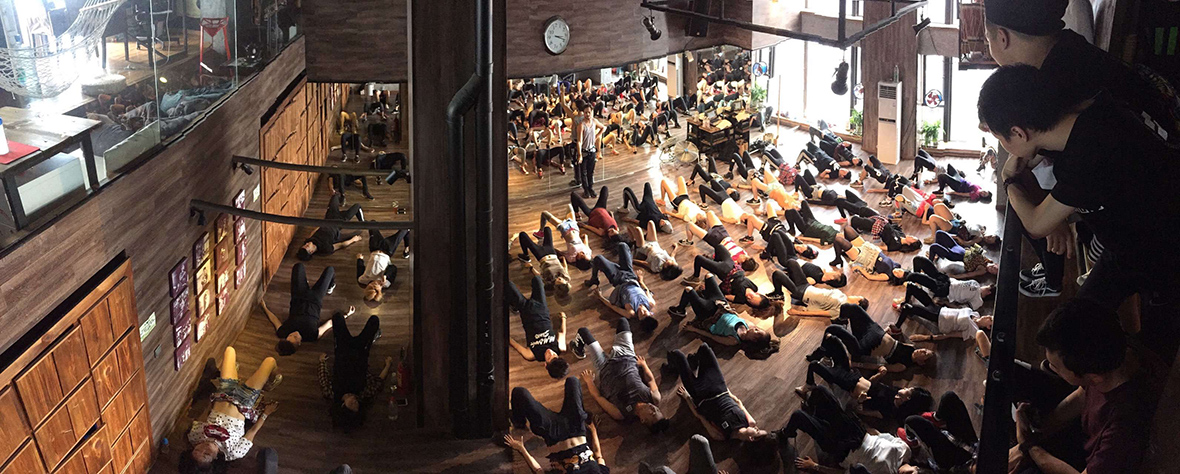
Address:
Poly Center, Tower East, Bldg. 3, No. 2115
Jinxiu Road No. 1, Wuhou District, Chengdu, China
Website: sinostage.com
Instagram: @sinostage
Contributor: George Zhi Zhao


